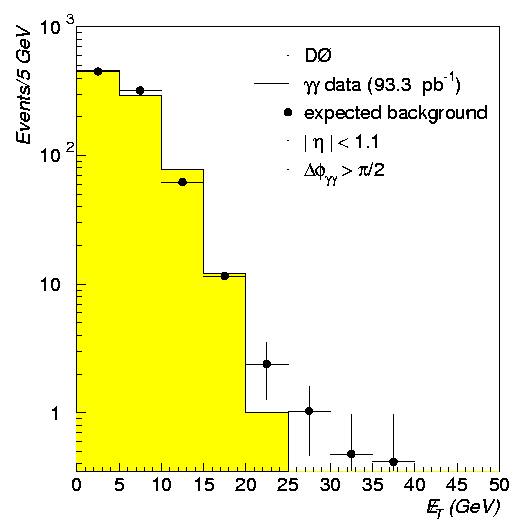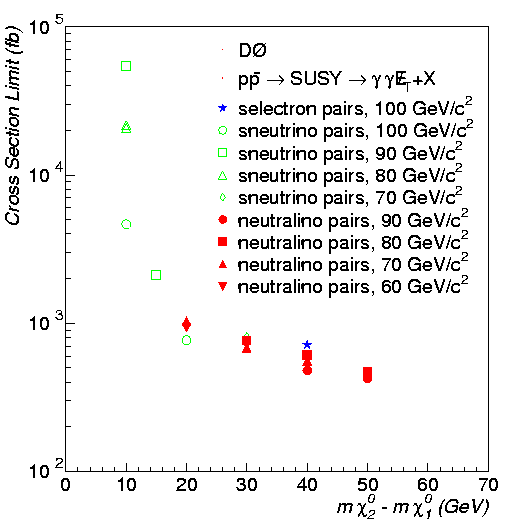12/29/96
Once again, extending the Standard Model will take longer than recently had been hoped. This theory provides an excellent description of the observed interactions of the most fundamental constituents of matter (the quarks and leptons). However there are good theoretical reasons to assume that it is just an approximation to, or part of, a larger and more general theory. One of the most popular suggestions for this larger theory is Supersymmetry (SUSY), which introduces a new symmetry between fundamental particles and predicts that there should be a supersymmetric partner for each of the presently observed particles. None of these superpartners has yet been observed, but over the past year there has been considerable theoretical speculation that a single event observed by the CDF detector at Fermilab, and reported at conferences this last summer, might be indicative of SUSY. This event contained two electrons, two photons and unbalanced (missing) transverse energy. Missing transverse energy is often used as a pointer to possible SUSY signals because it could indicate the escape of a non-interacting SUSY particle (like the lightest superpartner) from the detector.
Physicists in the DØ ("D-Zero") Collaboration have recently submitted a paper to Physical Review Letters describing a similar search for SUSY particles. They used the DØ detector at the Fermilab Tevatron Collider, where protons and antiprotons are made to collide in the world's highest energy particle accelerator. The DØ detector uses a calorimeter consisting of uranium and liquid argon to measure the energy of all the interacting particles produced in the proton-antiproton collisions. This detector technique affords an excellent measurement of missing transverse energy. The DØ Physicists searched for events with two photons and missing transverse energy, which could signal pair production of SUSY particles. From over 100 million interactions recorded in the 1992-95 data-taking run 842 events contained two good-quality photons. However none of these events is found to have unexpectedly large missing transverse energy. They therefore fail to confirm the kind of SUSY model inspired by the CDF event, and in fact rule out a significant fraction of them.
There are still good reasons to believe that SUSY may exist; it could well be that the superpartners are produced too rarely to be seen in the current data sample. For this reason the Fermilab accelerator and detectors are in the midst of a major upgrade that will increase the collision rate by a factor of twenty in the next data-taking run, scheduled for 1999.
The paper describing the DØ Collaboration's findings: "Search for Diphoton Events with Large Missing Transverse Energy in proton-antiproton Collisions" was submitted to Physical Review Letters on Dec 12,1996.
A copy of the paper, in preprint form, is available from either Fermilab-Pub-96/446-E or hep-ex-9612011 .
For further information contact Dr. John Womersley, Fermilab, email: womersley@fnal.gov
![]() Return to DØ Physics Summaries
Return to DØ Physics Summaries
 |
 |
| Figure 1 (postscript) | Figure 2 (postscript) |